Physics II - B11

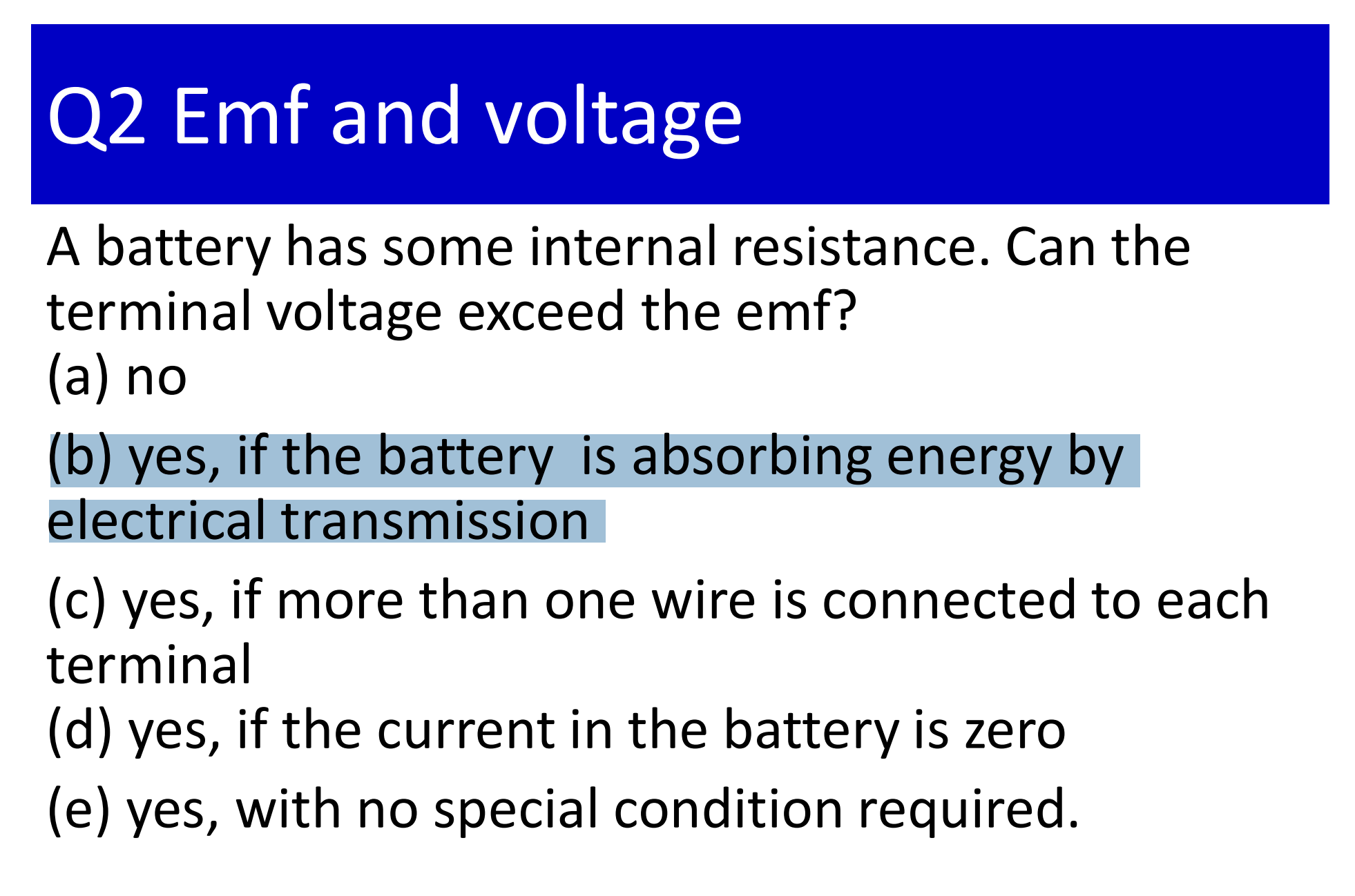

- The $”=”$ exists when $R = r$.
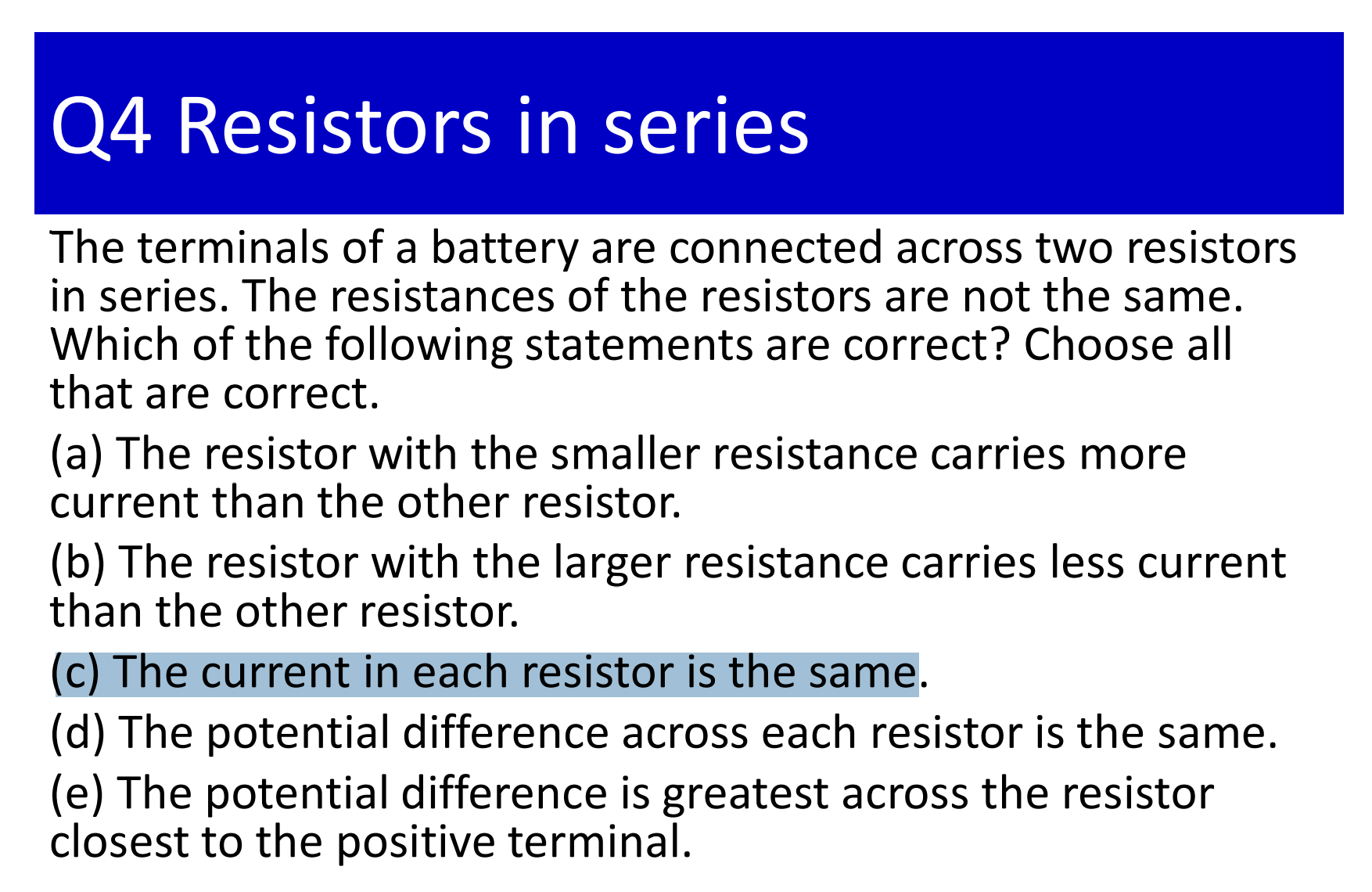
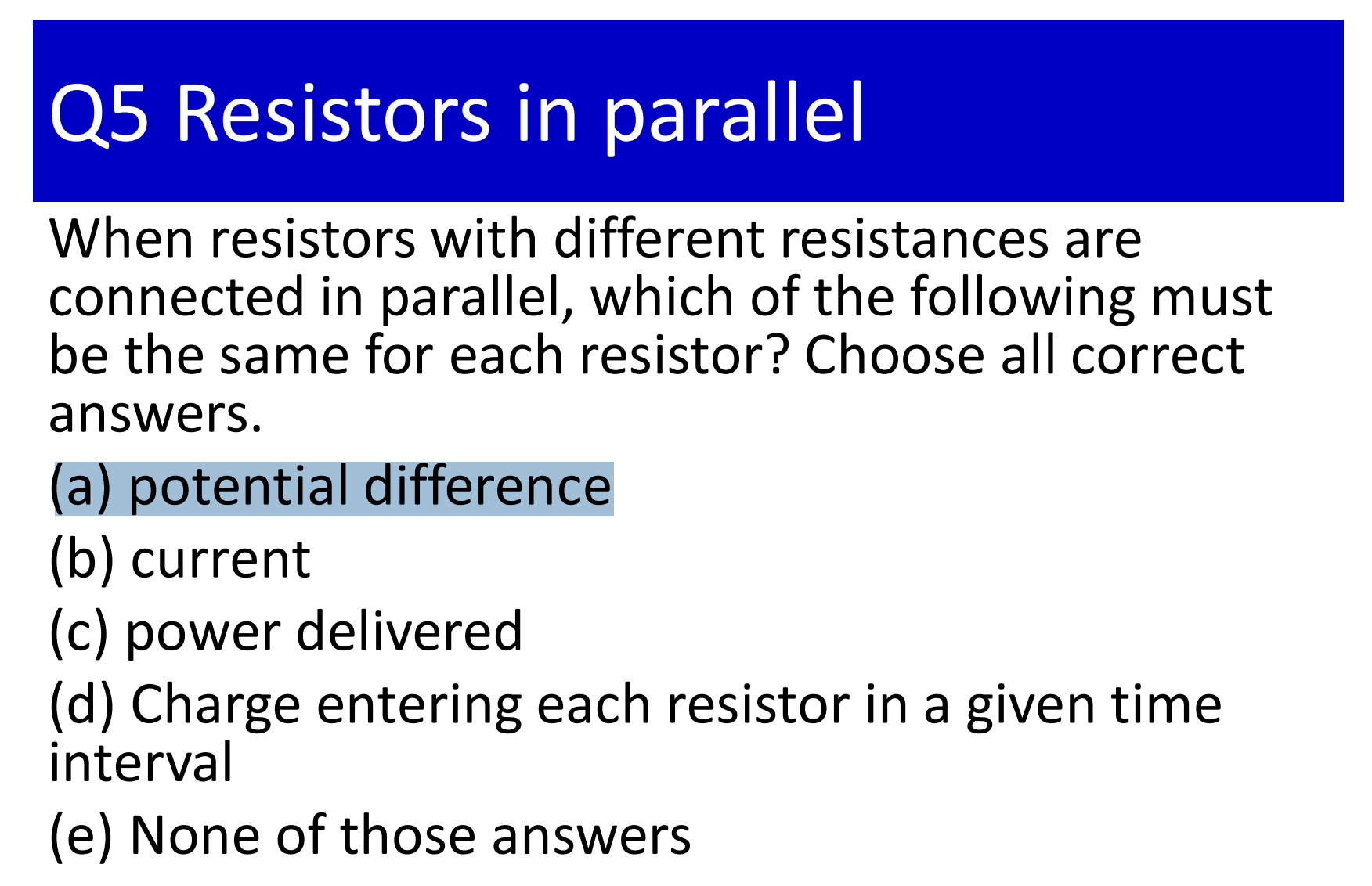
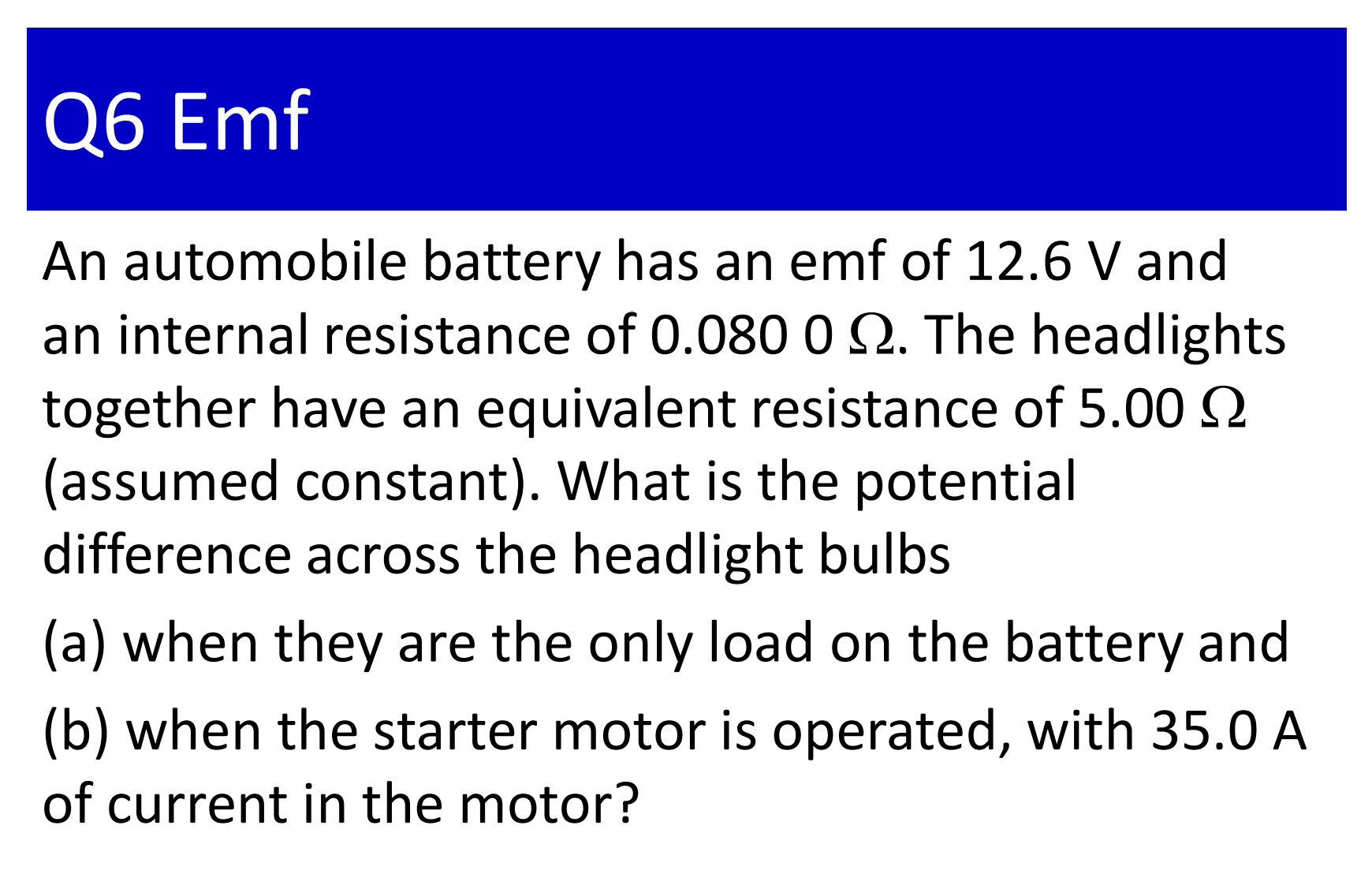
$b)$ Let $I_1$ be the current flowing through the automobile battery, $I_2$ be the current flowing through the headlight bulbs. From the Kirchhoff’s law, we get:
\[I_1 = I_2 + 35A\] \[\displaystyle \xi = I_1r + I_2R = (I_2 + 35)r + I_2R\] \[\displaystyle I_2 = \frac{\xi - 35r}{R+r} = 1.93(A)\] \[\Delta V = I_2R = 1.93 \times 5 = 9.65(V)\]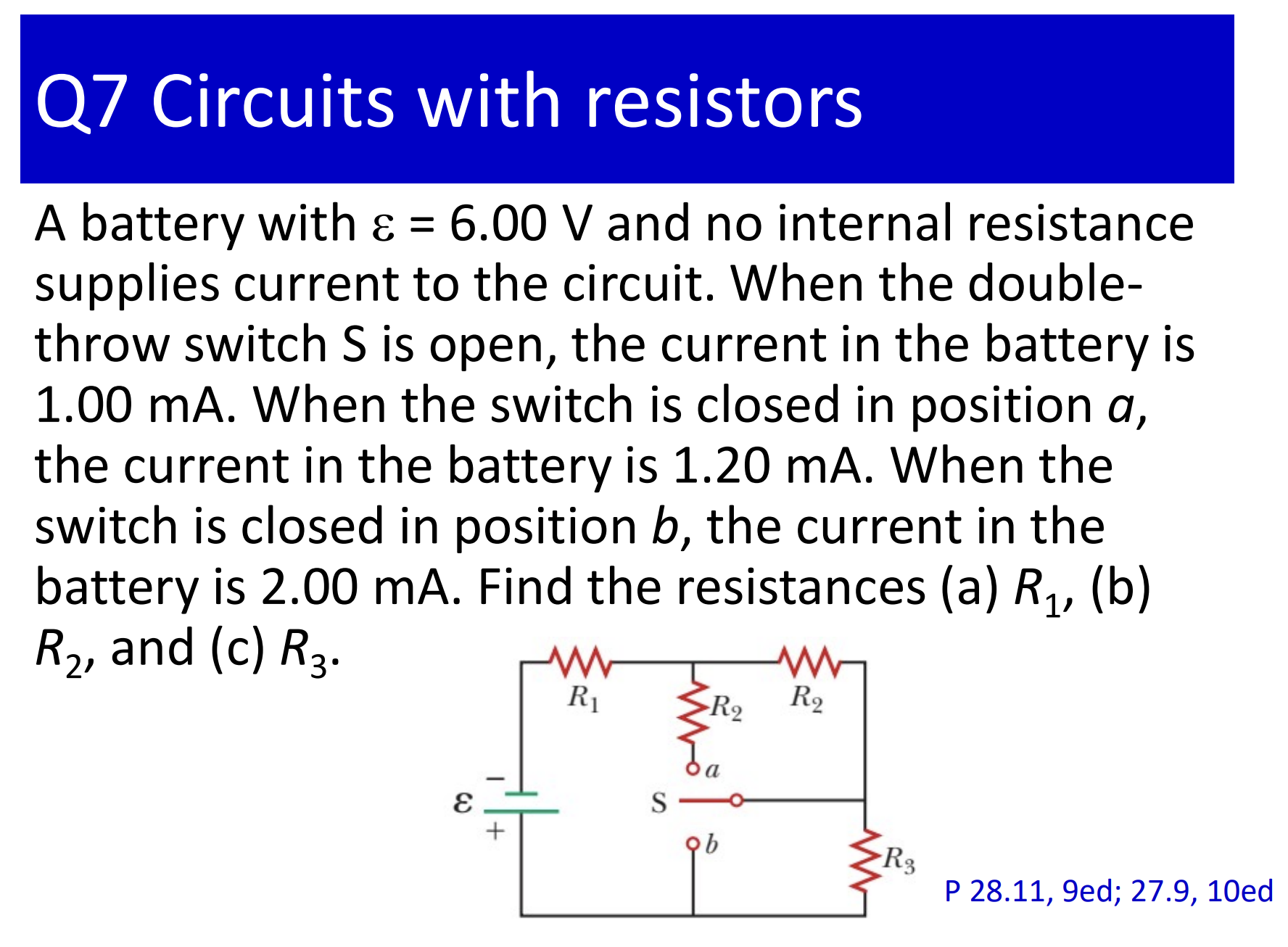
- When $S$ is open $:$
- When $S$ is closed at position $a:$
- When $S$ is closed at position $b:$
- From $(1)(2)(3)$ $\to R_1 =$ $1$ $k \Omega,$ $R_2 = 2$ $k \Omega,$ $R_3 = 3$ $k \Omega.$
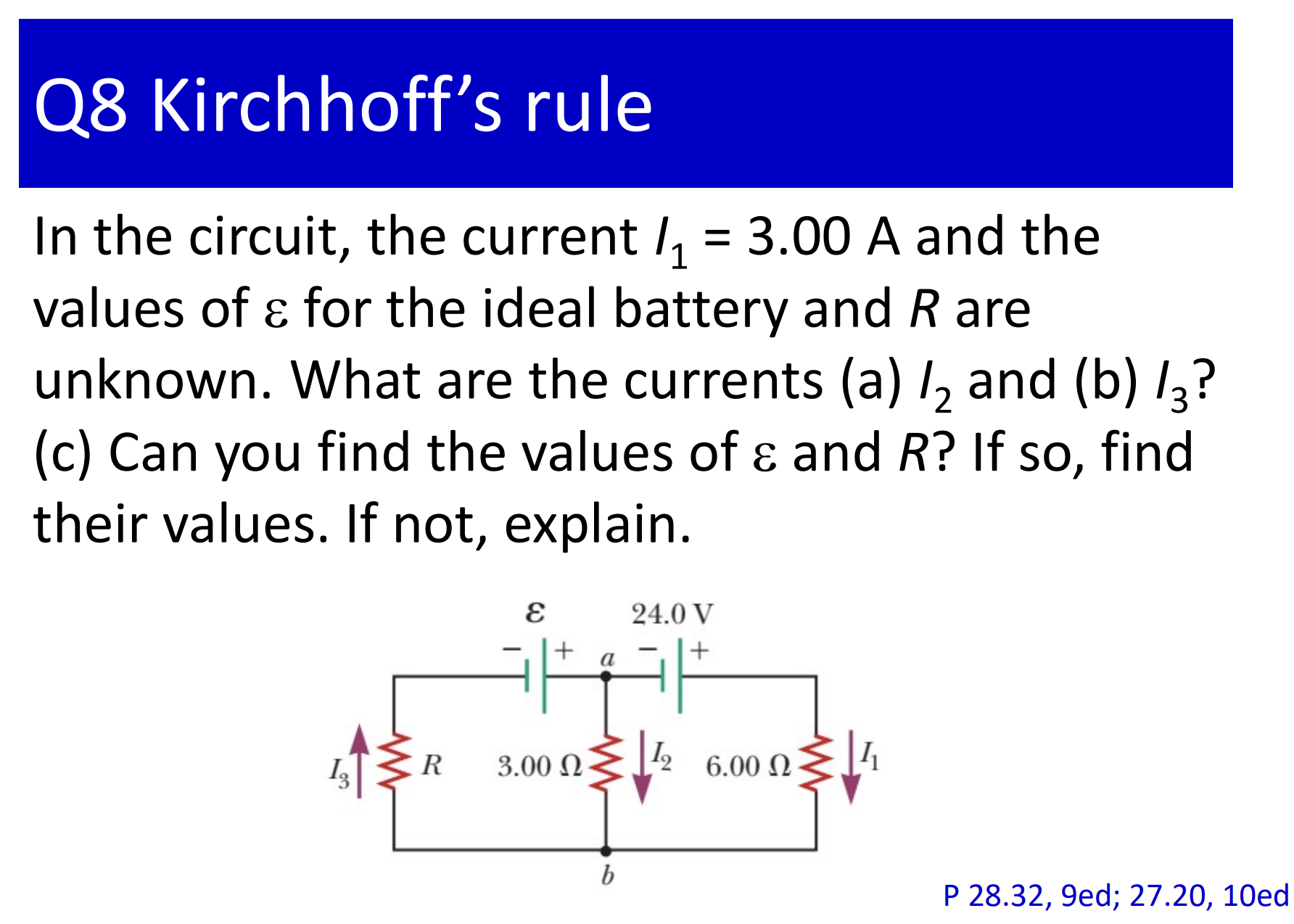
- The potential difference from $a$ to $b$ following path $I_1:$
- The potential difference from $a$ to $b$ following path $I_2:$
- Therefore $:$
$b)$ $I_3 =I_1 + I_2 = 3-2 = 1(A)$
$c)$ Nooo…Because we don’t have enough equations to calculate both $\xi$ and $R.$
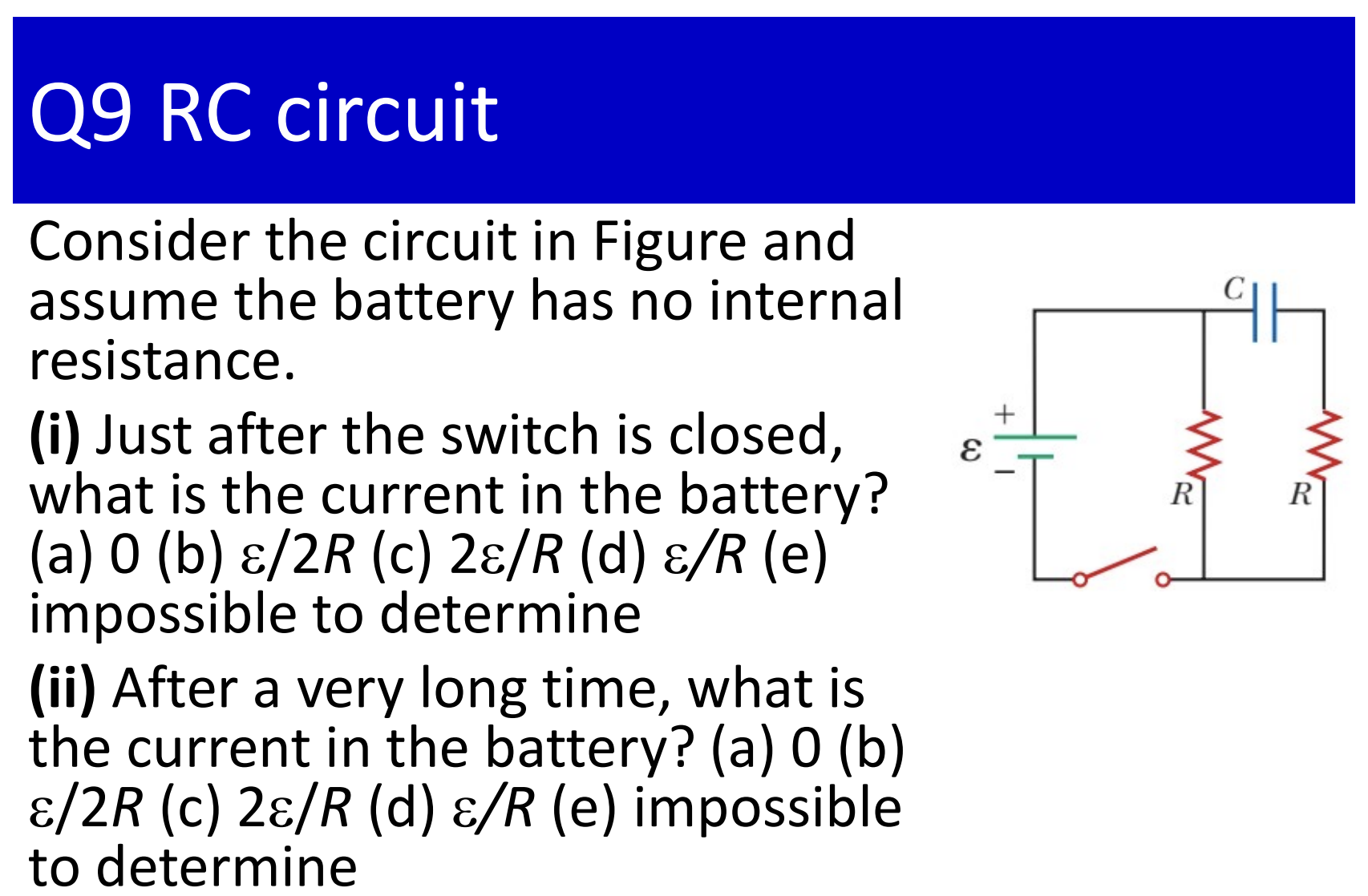
$i)$ $C$
$ii)$ $D$

$a)$ $\tau = RC = (R_1 +R_2)C = 1.5 (sec)$
$b)$ $\tau = R_2C = 0.5(sec)$
$c)$ $\displaystyle I_1 = \frac{\xi}{R_1}$, $\displaystyle I_2 = \frac{\xi}{R_2}e^{\frac{-t}{R_2C}}$
The total current in the switch is $:$ $\displaystyle I = \xi\bigg[\frac{1}{R_1}+\frac{e^{\frac{-t}{R_2C}}}{R_2} \bigg]$